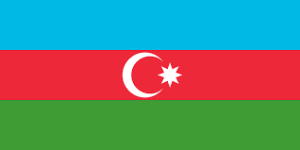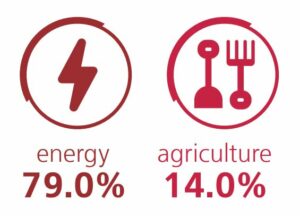
Climate policy development and advancing cooperation with the EU in Azerbaijan

The European Union (EU)’s relations with Azerbaijan are based on the EU-Azerbaijan Partnership and Cooperation Agreement in force since 1999, while negotiations on a new bilateral agreement are ongoing. Azerbaijan is also part of the Eastern Partnership initiative and a member of the Organization of Black Sea Economic Cooperation (BSEC). A new Memorandum of Understanding (MoU) on a Strategic Partnership between Azerbaijan and the EU in the energy field was signed in 2022 that allows for enhanced cooperation on their energy partnership. The new MoU supports doubling the capacity of the Southern Gas Corridor as of 2027, reflecting the long-term nature of the energy partnership between the EU and Azerbaijan. The first-ever investment project backed by an E5P grant has been signed and will help to upgrade around 80% of street lighting infrastructure in the city of Ganja and produce significant energy savings.
Since 2021 the following climate-related policy documents have been adopted by the government of Azerbaijan:
- The law “On the Use of Renewable Energy Sources in Electricity Generation,” was adopted on 31 May 2021 and approved on 12 July 2021.
- Under the EU4Energy programme phase I – adoption of a law on “Rational use of energy resources and energy efficiency”, the development of the first “National Action Plan on Energy Efficiency of the Republic of Azerbaijan” and the Roadmap for accelerating the adoption of eco-design and labelling requirements for products using energy.
- The project provided support to MoEnergy on establishing technical norms and standards for energy efficiency in buildings in line with EU and best international standards, such as:
- Energy efficiency certification system introduced; Assessment of the existing billings standards in Azerbaijan;
- Draft Rules for energy efficiency certification of buildings;
- Approximation of the EU legal framework on eco-design and energy labeling;
- Capacity building among relevant governmental and non-governmental Stakeholders and awareness-raising and communication programme on energy efficiency.
- The “Azerbaijan 2030: National Priorities for Socio-economic Development” was approved on 2 February 2021. The 5th priority is a clean environment and a country of “green growth”. Azerbaijan is moving forward on its sustainable energy pathway, with strong support from the EU, including through the EU4Energy Initiative, and from international financing institutions.
-
 2014
2014
- 3rd National Communication
- National Adaptation Strategy until 2020
- Biennial Update Report 1 (BUR1)
 2015
2015
- INDC 2016-2030
- COP21 Paris Agreement
- Pledge to Sustainable Developent Agenda 2030
 2016
2016
- Strategic Road Map on National
- Economic Perspectives until 2025
 2017
2017
- New EU Framework agreement
- Ratification of Paris Agreement
 2018
2018
- EU-Azerbaijan yearly high level security
dialogue launched - Biennial Update Report (BUR2)
- EU-Azerbaijan yearly high level security
 2019
2019
- EU4Climate launched
 2020
2020
- Update of the LEDS 2050 initiated
 2021
2021
- Fourth National Communication submitted
- LEDS 2050 – the draft report is undergoing public consultations
 2022
2022
- MRV, CBT and Gender Mainstreaming in Energy and Agriculture reports submitted to the Government
 2023
2023
- Updated NDC 2021-2030 submitted to the government for approval
- Updated LEDS 2050 submitted to the government for approval
EU4Climate key policy interventions and expected impact


Result areas and timeframe in Azerbaijan
|
RESULT AREAS |
2019 |
2020 |
2021 |
2022 |
|||||||||||
|
|
Q3 |
Q4 |
Q1 |
Q2 |
Q3 |
Q4 |
Q1 |
Q2 |
Q3 |
Q4 |
Q1 |
Q2 |
Q3 |
Q4 |
|
|
NDC |
|||||||||||||||
|
Long-term LEDS |
|||||||||||||||
|
MRV System |
|||||||||||||||
|
EU Climate Acquis |
|||||||||||||||
|
Climate mainstreaming |
|||||||||||||||
|
Climate investment |
|||||||||||||||
|
Adaptation planning |
|||||||||||||||
Result areas and timeframe in Azerbaijan

Full country profile can be downloaded here.



 Azerbaijan
Azerbaijan

